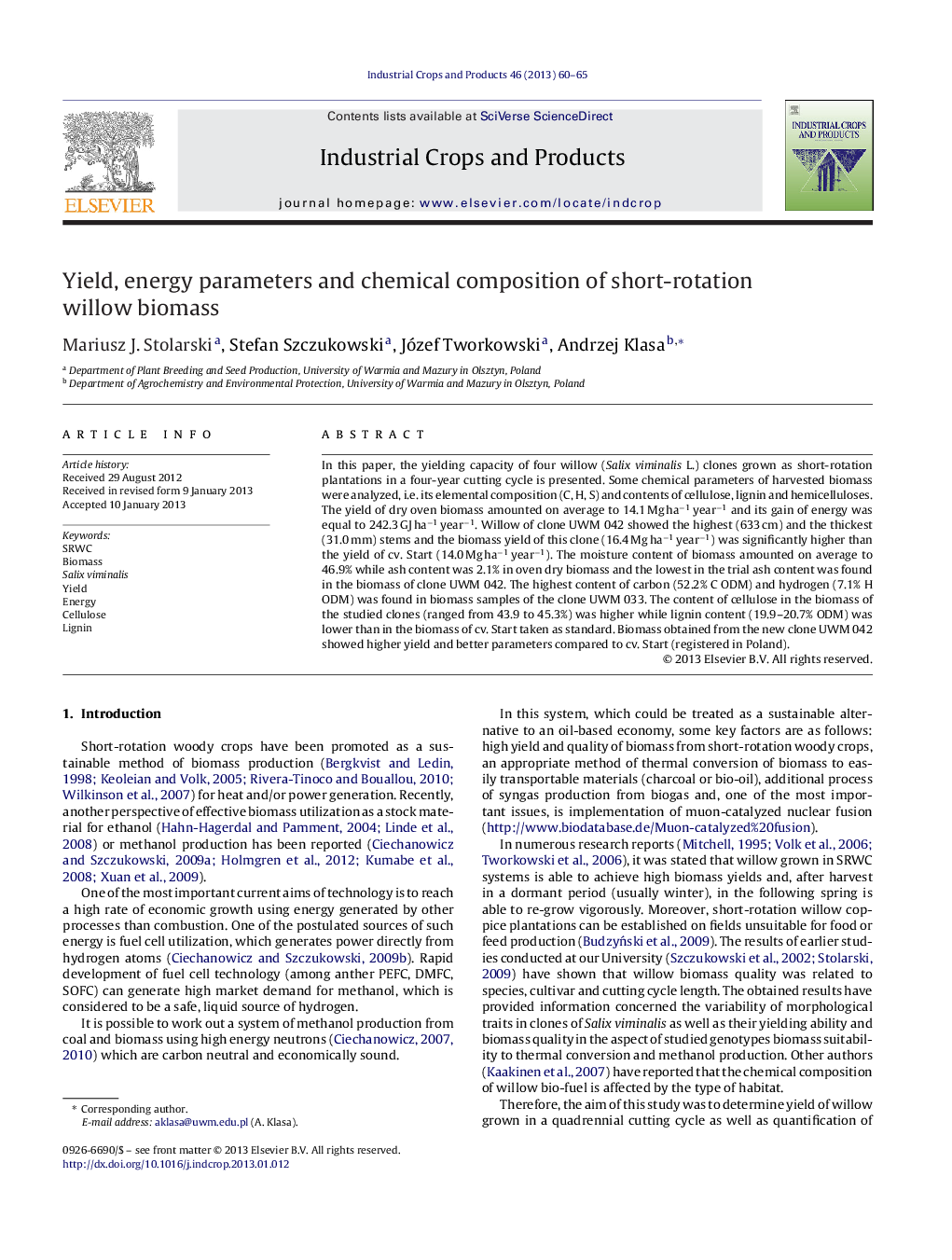| Article ID | Journal | Published Year | Pages | File Type |
|---|---|---|---|---|
| 4513827 | Industrial Crops and Products | 2013 | 6 Pages |
In this paper, the yielding capacity of four willow (Salix viminalis L.) clones grown as short-rotation plantations in a four-year cutting cycle is presented. Some chemical parameters of harvested biomass were analyzed, i.e. its elemental composition (C, H, S) and contents of cellulose, lignin and hemicelluloses. The yield of dry oven biomass amounted on average to 14.1 Mg ha−1 year−1 and its gain of energy was equal to 242.3 GJ ha−1 year−1. Willow of clone UWM 042 showed the highest (633 cm) and the thickest (31.0 mm) stems and the biomass yield of this clone (16.4 Mg ha−1 year−1) was significantly higher than the yield of cv. Start (14.0 Mg ha−1 year−1). The moisture content of biomass amounted on average to 46.9% while ash content was 2.1% in oven dry biomass and the lowest in the trial ash content was found in the biomass of clone UWM 042. The highest content of carbon (52.2% C ODM) and hydrogen (7.1% H ODM) was found in biomass samples of the clone UWM 033. The content of cellulose in the biomass of the studied clones (ranged from 43.9 to 45.3%) was higher while lignin content (19.9–20.7% ODM) was lower than in the biomass of cv. Start taken as standard. Biomass obtained from the new clone UWM 042 showed higher yield and better parameters compared to cv. Start (registered in Poland).
► New willow genotypes from our collection were tested on the background of national standard. ► High variability of yield and chemical composition of harvested biomass has been found. ► Among studied genotypes the best parameters were recorded for biomass of clone UWM 042.
